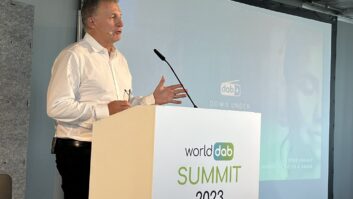LONDON��WorldDAB has released its latest figures on sales and DAB coverage for key markets in Europe and Asia Pacific for the end of Q2 2016. Available to download as aninfographic here, the statistics include road and overall population coverage, receiver sales, household penetration and, for the first time, the number of national stations on DAB/DAB+ as compared to FM.
Key findings include:
- Almost 50 million consumer and automotive receivers (48,232,000) have been sold across the featured markets
- In the majority of markets, up to 5X as many national stations are available on DAB/DAB+ as on FM / AM
- Coverage in Norway and Switzerland is at 99.5%, with Denmark, The UK, The Netherlands and Germany close behind
- Over half of radio listening in Switzerland is now digital (53%)
- Household receiver penetration in Norway is now at 67% with the UK close behind with 56%
- Germany, Netherlands, Italy, France and Belgium all show signs of positive growth in the last year

�Digital radio continues to go from strength to strength with all markets making significant progress in the last six months,� said Patrick Hannon, President of WorldDAB. �The leading markets in Europe and Asia Pacific have almost 50 million DAB receivers on the market, offering an impressive selection of national stations compared to FM/analog broadcasts.
Sources for the infographic include: Digitalradio Norge, TNS Gallup, MCDT, GfK, SMMT/CAP UK, BBC, RAJAR/Ipsos MORI/RSMB, Teracom A/S, Deutschlandradio, WDR, Media Broadcast, Digitisation report�2016 carried out by TNS Infratest, JATO Dynamics, Digital Radio NL, digitalradio.it, WorldDAB,Glass�s�Automotive Business Intelligence, and Commercial Radio Australia. Full details on sources for each statisticareavailable here.
�
�












